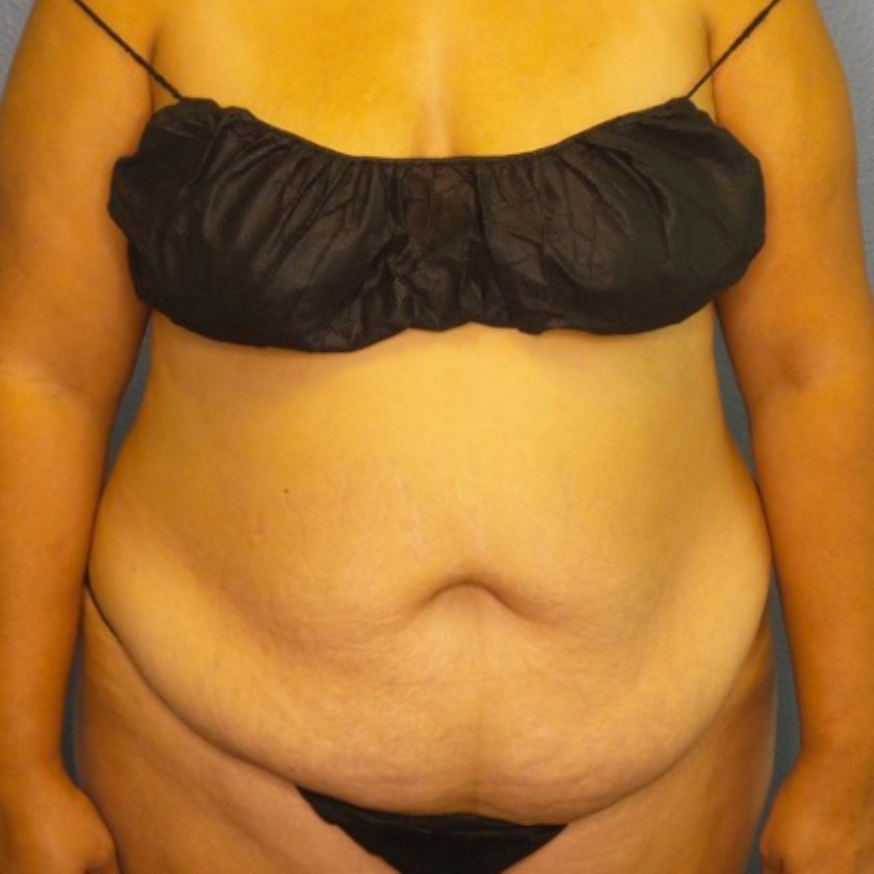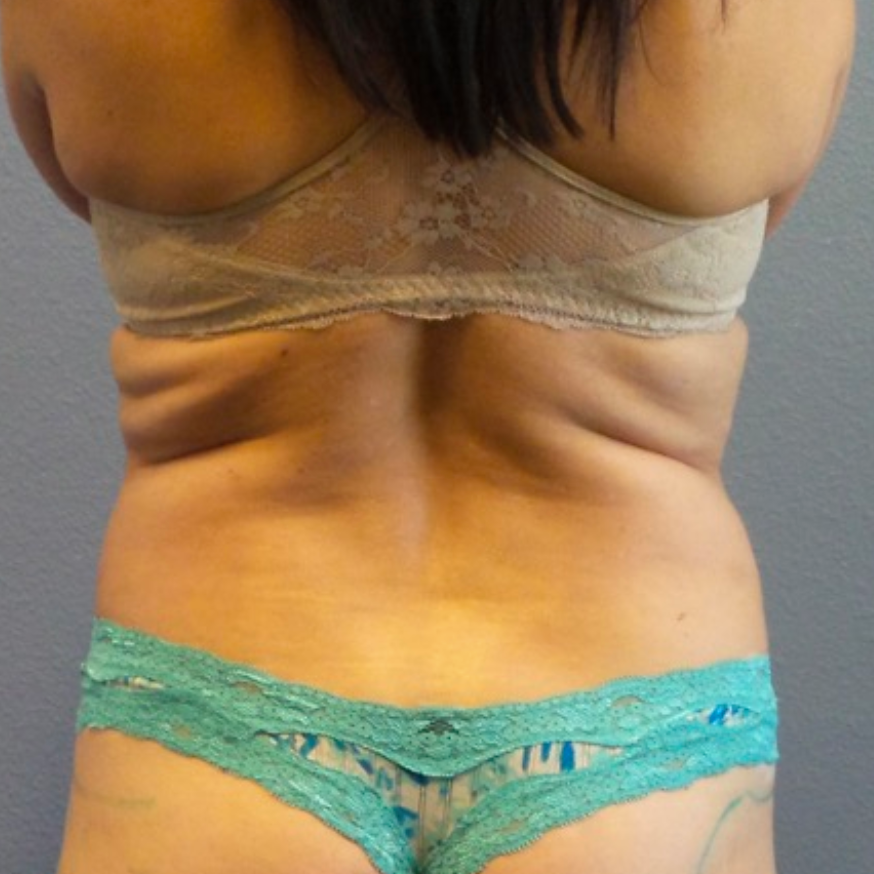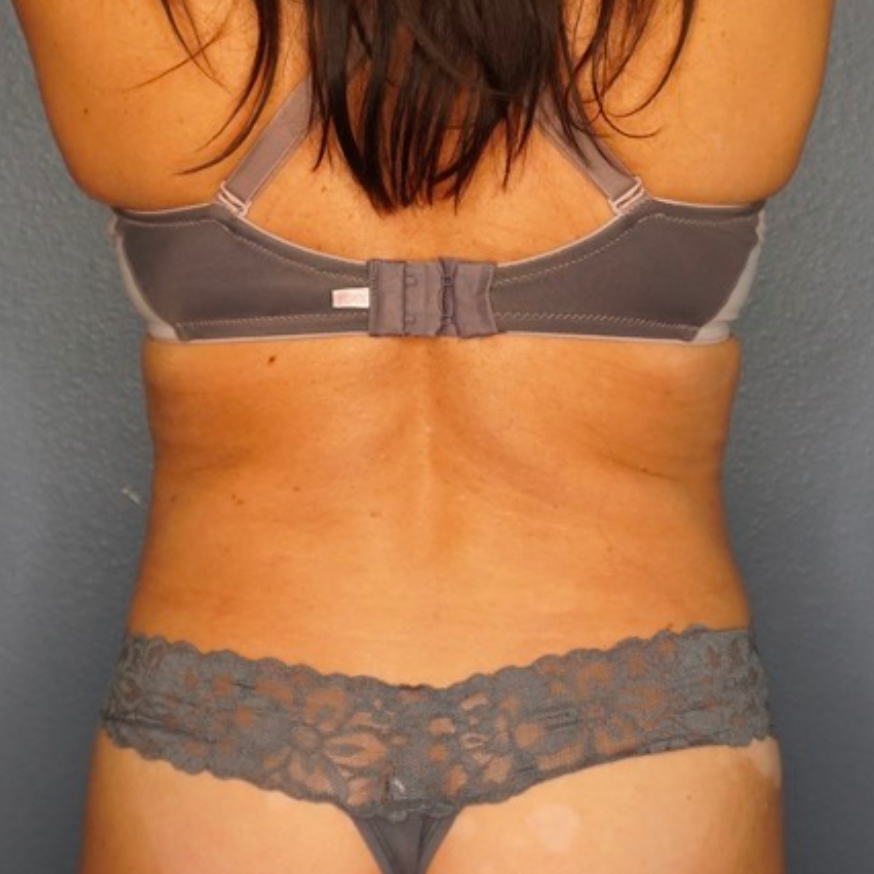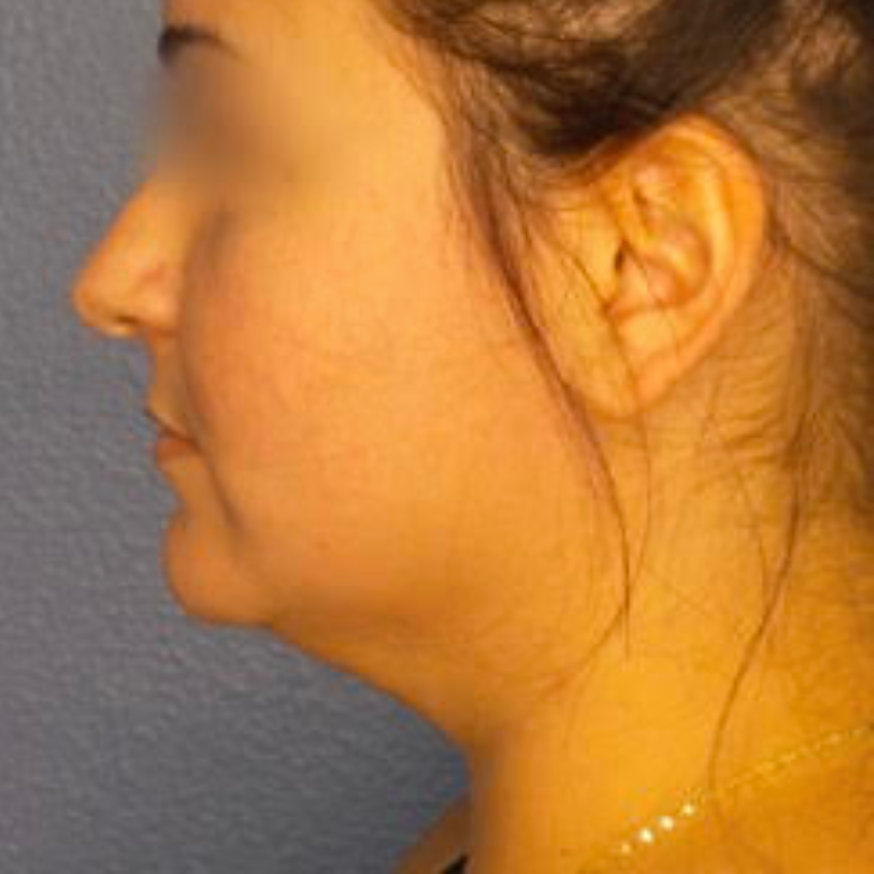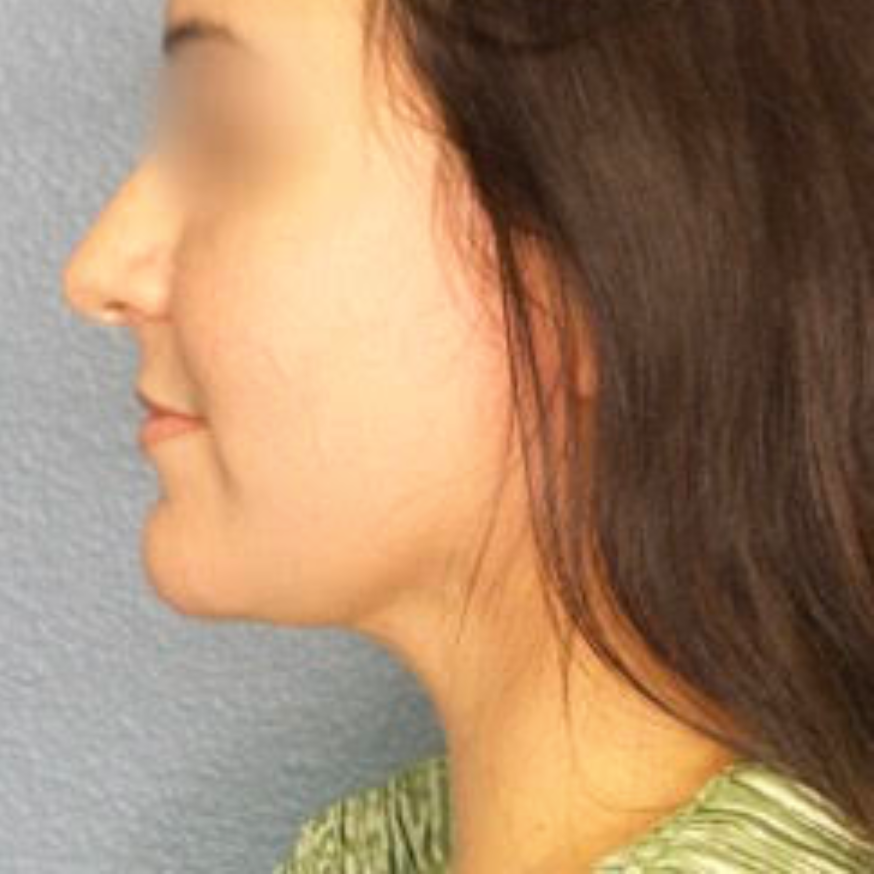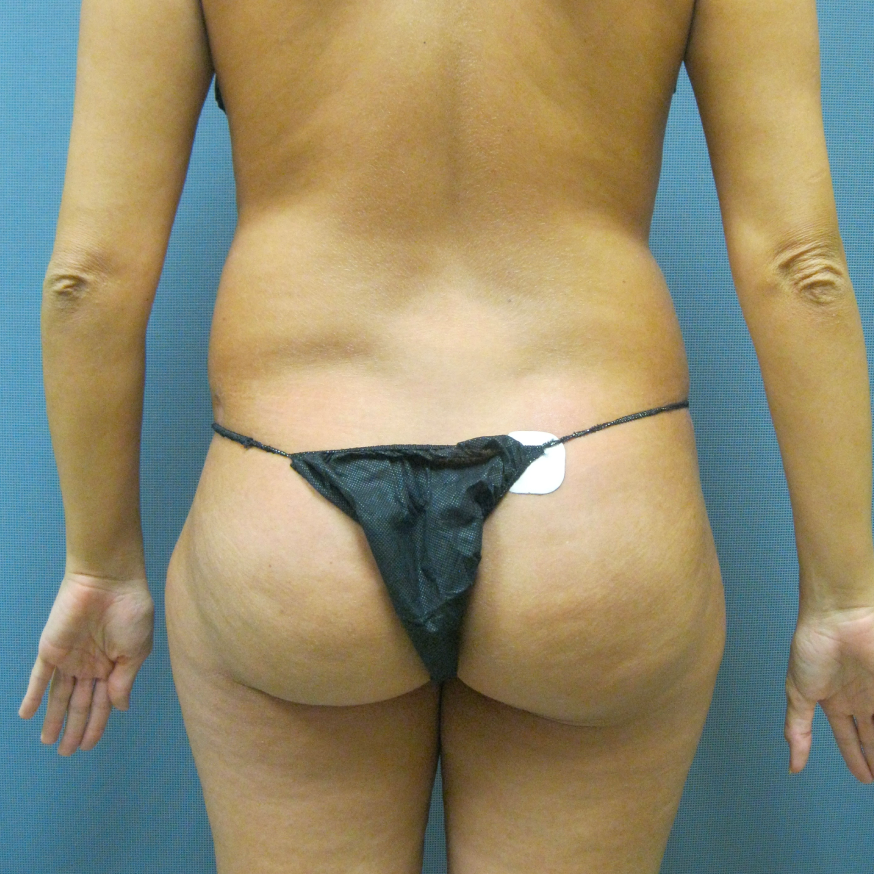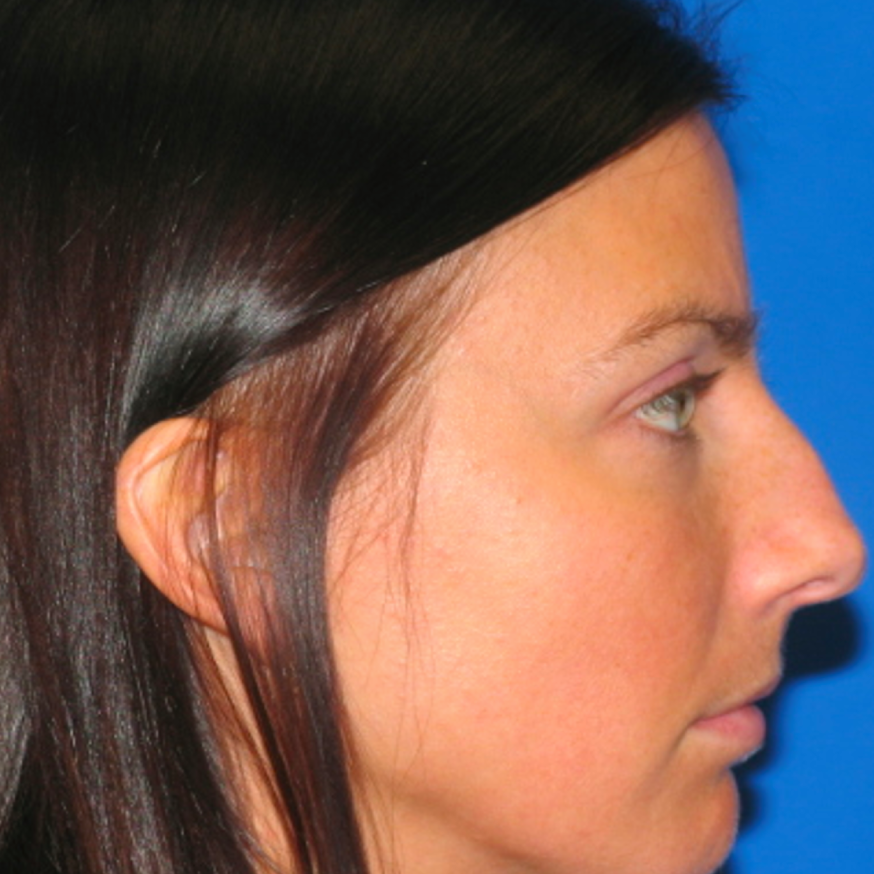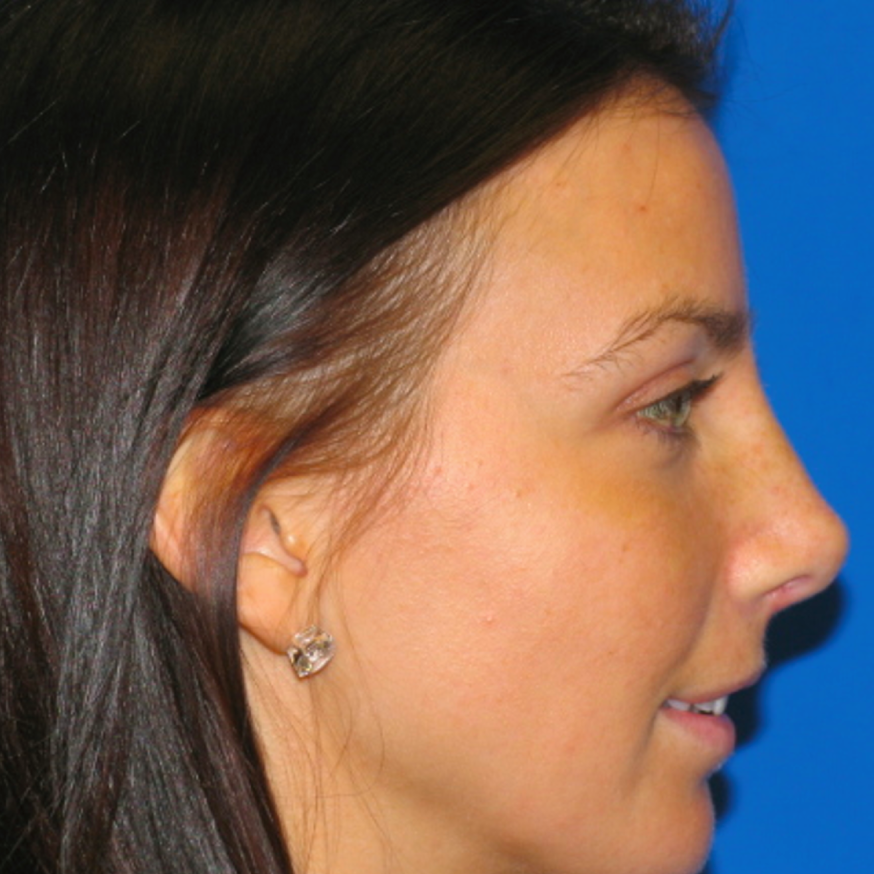Nasal Tip Surgery
Conveniently located to serve the areas of Tampa and Lakeland, FL

Prior to the nasal tip surgery, the featured patient suffered from a deviated septum and nasal tip overhang. A nasal tip overhang refers to the positioning of the nasal tip being inferior to the nasal base.
Prior to the patient’s rhinoplasty the tip of her nose hung lower than the base of her nose and it pointed downwards. Additionally, her nose appeared large, round and her nostrils were not visible when looking at her straight on. The rhinoplasty corrected all of these problems and gave her an overall more desirable appearance. Following the rhinoplasty, the patient’s nose appears to be smaller and the tip no longer has a circular shape. The nostrils curve in a more attractive shape and are slightly visible when looking at the patient straight on. The patient also had a very small hump prior to the rhinoplasty procedure. This ailment was able to be fixed during the procedure and is no longer visible in the photograph taken after her nose had healed.
Contact UsContents
Procedure
Nasal septum deviation, also referred to as a deviated septum, is very common. There are more than 3 million US cases per year. The nasal septum refers to the bone and cartilage that divide the nasal cavity of the nose in half. In the case of a deviated septum, the nasal septum is significantly off center or crooked. Many people have a slight deviated septum but it is so significant that it goes unnoticed. A deviated septum can be attributed to birth, normal growth during childhood, or an injury to the nose.
Oftentimes, a deviated septum does not cause an individual any problems or symptoms. However, some symptoms may include difficulty breathing through the nose, nasal congestion, sinus infections, nosebleeds, or a postnasal drip. Though not everyone with a deviated septum needs medical attention, some people will elect to undergo a rhinoplasty (nose job) to correct the appearance of a deviated septum.
It is evident in the patient’s before and after photographs that her nose was slightly deviated to the right. Her nose is straight and aligned down the center of her face following the rhinoplasty procedure.
Understanding Tip Rhinoplasty
Tip rhinoplasty focuses on refining and reshaping the nasal tip to improve both aesthetic appearance and nasal function. It is crucial to conduct a comprehensive evaluation to understand the underlying nasal structure thoroughly. Evaluating the nose as part of a complete facial analysis is essential. Given the many factors influencing the results of a tip rhinoplasty, a systematic preoperative analysis is essential.
The Importance of a Thorough Evaluation
Assessing frontal, lateral, and basal views is standard practice. Certain deformities may only be visible in specific views, making it essential not to omit any of these perspectives. Missing important findings that are not addressed during surgery can negatively impact the postoperative outcome. For practical purposes, the nose is divided into thirds (upper, middle, and lower third) and analyzed individually. This method allows the surgeon to modify the desired part and tailor the procedure to the specific area of pathology.
Evaluating Nasal Views
Surgeons evaluate the width and symmetry of the nose using frontal and basal views, while they assess the dorsal line, tip location and projection, and the morphology of the nostrils with the lateral view. Although the evaluation components should be standardized, cultural differences and preferences must be acknowledged. Skin thickness varies considerably between patients and within individuals. The skin overlying the upper third of the nose is typically thinner and more mobile compared to the thicker, sebaceous skin overlying the lower third.
Techniques in Tip Rhinoplasty
Tip rhinoplasty involves various techniques to achieve the desired outcome. These techniques may include cartilage grafting, suturing, and trimming to refine the nasal tip. The surgeon’s skill and experience also play a crucial role in achieving a natural and aesthetically pleasing result.
Hump Reduction
Surgeons often combine tip rhinoplasty with hump reduction to create a harmonious nasal profile. This procedure involves removing excess bone and cartilage to smooth the nasal bridge. A thorough understanding of the nasal anatomy and a careful surgical approach are necessary to ensure a balanced and natural-looking outcome.
Preoperative Analysis
A systematic preoperative analysis involves evaluating the nasal structure, skin type, and overall facial features. This analysis helps the surgeon plan the procedure and anticipate potential challenges. The goal is to create a surgical plan that addresses the patient’s concerns while preserving or enhancing nasal function.
Post Surgery Care and Results
Postoperative care is critical to achieving the best possible results. Patients must follow their surgeon’s instructions carefully, which may include avoiding strenuous activities, keeping the head elevated, and attending follow-up appointments. With proper post-operative care, most patients find satisfaction in the function and appearance of their nose after tip rhinoplasty and hump reduction.
Conclusion
Tip rhinoplasty and hump reduction are specialized procedures that require a thorough understanding of nasal anatomy and a systematic approach to preoperative analysis. By carefully evaluating the nasal structure and using advanced surgical techniques, surgeons can achieve natural-looking results that enhance both the form and function of the nose. In conclusion, nasal surgery, including tip rhinoplasty, not only improves facial harmony but also boosts patients’ self-confidence and overall quality of life.
Learn more about nasal tip-shaping surgery here.
Reference
- Mohmand MH, Ahmad M. Component rhinoplasty. World J Plast Surg. 2014 Jan;3(1):18-23. PMID: 25489519; PMCID: PMC4236976.

